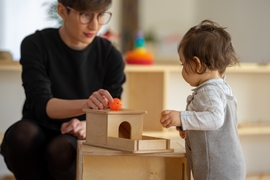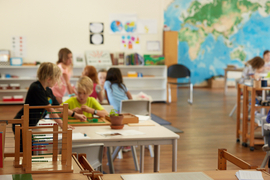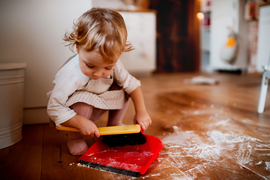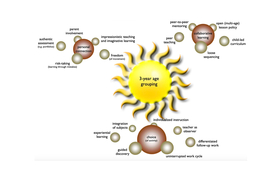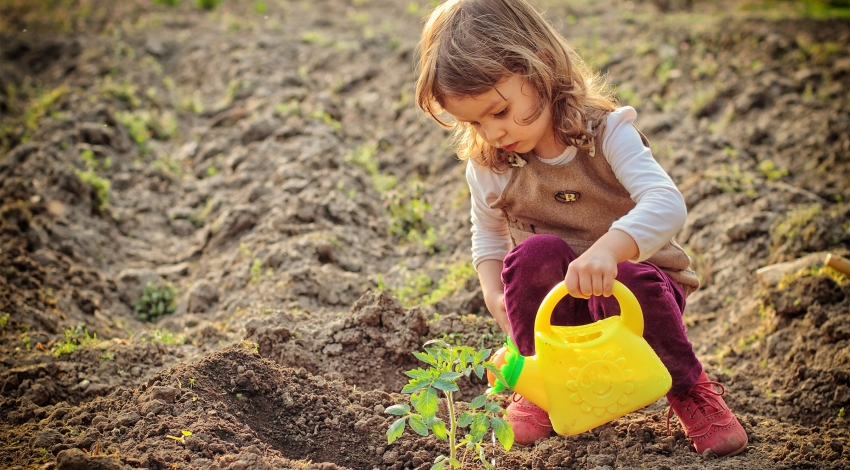
The outdoor area is an extension of the inside space as well as being a space in its own right. It often includes a garden where the children can grow and harvest flowers, herbs, fruits and vegetables. Plants which reflect a variety of flowers, leaf shapes, smells and colours should be available to the child outside.
The activities and materials offered outside have just as much thought and care put into them as those offered inside. There are opportunities for purposeful movement, order, communication and independence. There are opportunities to practice and apply skills of care of self, care of others and care of the environment. Some activities your 3 to 6 child may do outside include: cloth washing, window washing, sweeping, raking, planting and harvesting and watering plants. Different art activities may also be offered outside such as: painting on an easel, clay and construction work.
The needs of the child and the child’s plane of development are considered when planning different outdoor activities. For example, spaces to practice jumping, hopping, skipping, balancing, digging, ball skills… Is this a child who needs opportunities to be a member of a team and enjoys challenging themselves and discovering how far to push their body? Opportunities for team games, places to climb, hang and swing may be offered. The outdoors is not just a place to use large muscles and be energetic, there are also places for children to be by themselves, quiet places for conversations or contemplation, for sitting, lying, and observing.
The outdoor environment can also include a covered area where children can take their tables, chairs and floor mats to work on. Materials which are often thought of as ‘inside activities’ can be taken outside. For example the 3 to 6 child may work with sorting, matching and grading colours (colour tables), textures (touch boards and tablets, fabrics), dimension (pink tower, brown stair, red rods). The child may take language or math activities outside to do. Memory games, language games and finding things in the environment games can all be played outside.
“There is freedom in the environment. There is discipline which arises out of the environment. There is joy which is the sign of every healthy growth. The conditions provide for mutual understanding, co-operation and helpfulness which are the roots of morality and character.’’ (What You Should Know About Your Child).
The children experience nature and the natural world. To learn about environmental issues and sustainability the children need to do more than talk about saving our planet. They need to go outside and explore the beauty and richness of the earth: to see with their own eyes, experience with their senses and contribute actively.
For the second plane child (6 to 12 years) the outdoor environment extends learning past the four walls of the classroom, past the school grounds and into the wider community.
"When the child goes out, it is the world itself that offers itself to him. Let us take the child out to show him real things instead of making objects which represent ideas and closing them in cupboards… Reality is studied in detail, then the whole is imagined. The detail is able to grow in the imagination, and so total knowledge is attained." (From Childhood to Adolescence)
